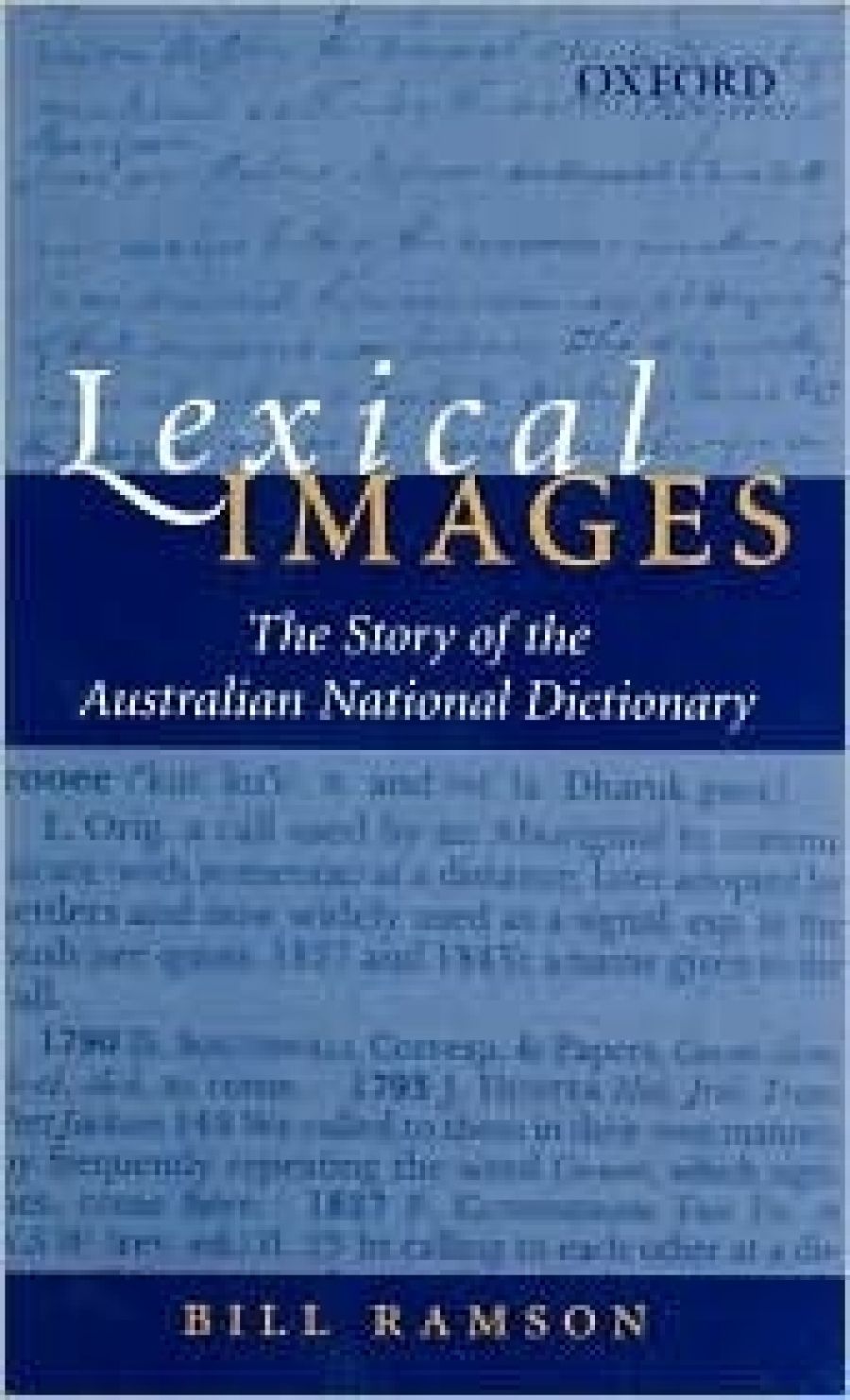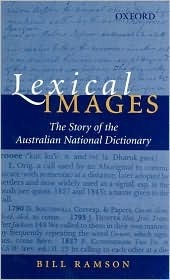
- Free Article: No
- Contents Category: Australian History
- Review Article: Yes
- Article Title: Lexical Memories
- Online Only: No
- Custom Highlight Text:
Reviewers often like to start with a simple statement of what a book is all about. In the present case, this is difficult, because there are two books within these covers. The first three chapters fit its subtitle, ‘The Story of the Australian National Dictionary’, while the next seven fit the title Lexical Images, being essays on aspects of Australian history and culture as reflected in the pages of the Australian National Dictionary (1988). If a single theme has to be extracted, it is that historical lexicography is a fascinating process, generating a valuable product.
- Book 1 Title: Lexical Images
- Book 1 Subtitle: The story of the Australian national dictionary
- Book 1 Biblio: Oxford University Press, $34.95 pb, 255 pp
- Book 1 Cover Small (400 x 600):

- Book 1 Cover (800 x 1200):

Those who wonder how the monumental work was compiled will delight at the domestic detail in the next chapter. Here is a small taste: ‘The associate editor’s preferred way of working was to spread the cards out on the floor of her room and, sometimes for days, to squat in their midst playing as it were an elaborate game of patience, the rules and strategies of which were known only to her.’ This chapter is, however, strangely lightweight considering the magnitude of the labour it represents. It gives recognition to the main contributors and some good anecdotes, but it is considerably less informative than the first two. Furthermore, the ‘story’ ends with the publication of the AND. This is rather like a biography that terminates with the birth of its subject. I would have liked at least one chapter on its impact, not only on Australian lexicography but also on the Australian content of the OED. This has been both dramatic and gratifying, but we hear nothing of it.
Instead, the rest of the book is devoted to a series of essays in which Ramson explores a by-product of historical lexicography: the way in which the language people use provides an insight into their lives, their attitudes and their aspirations. This is not a new idea, but Ramson adds a fresh dimension with his emphasis on chronology: the date of arrival of new words and usages can be linked to, and hence throw light on, changes in these attitudes and aspirations.
The first and longest of these chapters explores the insights to be gained from a comparison of the content of the AND with that of its Kiwi equivalent, Harry Orsman’s Dictionary of New Zealand English (1997). Subsequent chapters analyse the words associated with the land and its use, loanwords from the various Aboriginal languages, words associated with convicts and diggers, words relating to swaggies and cockies, and words showing the emergence of a national identity. According to the author, these analytical chapters started life as case studies to illustrate his side of an academic debate raging in the pages of The Australian Journal of Linguistics, but he wisely decided to play this fact down. The argument was, by the sound of it, of little general interest, whereas the material in the chapter has something for everybody.
The pleasure of reading these pages is similar to that of reading the AND itself, but the images become more vivid and accessible through having the words grouped by theme and chronology. The total effect is curious: firstly, a sort of vicarious nostalgia, then a wonder at the richness of the harvest, and all the time a growing sense of awe at the magnitude of the task Ramson and his colleagues undertook.
Having said this, I must add that these chapters contained few surprises. At the end of the chapter ‘Of Kiwis and Kangaroos’, Ramson states: ‘It is true that none of what is said above tells us anything new about Aborigines or Maoris, about Australians or New Zealanders.’ Unfortunately, the same could be said of all these essays. I was somehow hoping that the analysis of so much data would generate some new insights, historical, cultural or whatever. In the event, it provides vivid illustration of what we already know, but does not add anything to our knowledge or understanding, except of the words themselves.
Perhaps the most remarkable thing about this book is that it exists: that there was a story to tell. Thirty years ago, nobody in Australia would have written ‘lexicographer’ as their job definition. The last thirty years have been extraordinarily productive, and this book, recording the creation of the most iconic of the dictionaries that have emerged, is an important contribution to our literary history.


Comments powered by CComment